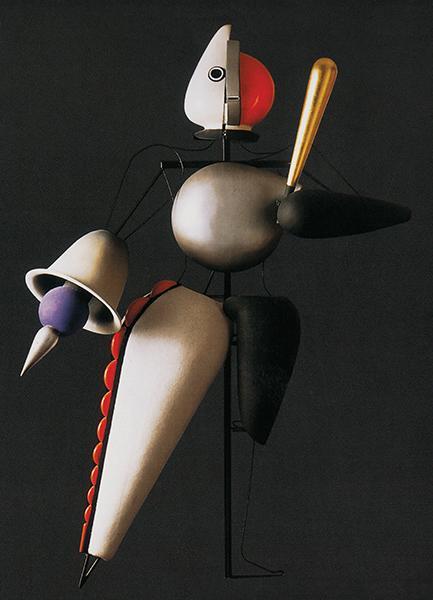Off-site event
Oskar Schlemmer. The Dancing Artist
13 Oct 2016 - 16 Jan 2017
13 Oct 2016 - 16 Jan 2017

The event is over


“For the artist, the representation of the human is always the great issue.” These words of German artist and choreographer Oskar Schlemmer (1888-1943) echo through the exhibition devoted to him by the Centre Pompidou, Metz. One of the great figures of 20th-century art, who sought to unite the humanist ideas of the Renaissance with the innovative energies of the avant-garde, Schlemmer revolutionised the arts of dance and drama in the 1920s.
The visitor is invited to explore the various facets of Oskar Schlemmer, from painter to dancer, from choreographer to theorist of the Bauhaus. Here his paintings and drawings dialogue with his work for the stage, represented by figures and costumes, drop cloths, masks, sculptures, posters and a variety of sometimes unpublished documentation, revealing the fertility of his multidisciplinary thought. At the end of the First World War, Schlemmer felt the need to reconceive the human being in the face of an increasingly technological world. His avant-garde ideas for the stage developed as worked on his Triadic Ballet. The fruit of ten years’ research, this dance freed of all rules was conceived in terms of polychrome costumes set in movement. At the première in Stuttgart in 1922, Schlemmer himself wore the costume of “The Abstract”, representing “the triumph of pure form”. The figures are deployed through three scene sequences each dominated by a different colour, from the yellow world of the burlesque to the black of the mystical and fantastic. Further light is cast on these by Schlemmer’s sketchbook of Tanzfiguren, 24 pages of sketches and preparatory studies that reveal the genesis of the finished product.
“The history of the theatre is the history of the transformation of the human body,” Schlemmer wrote in 1925 in Man and Art Figure. He made the study of the body central to his artistic reflection and his teaching at the Bauhaus, where he experimented in dance and performance. His lectures echoed the debates that animated the School, proposing a synthesis of the arts in which dance, music, architecture and painting co-habited, stressing mastery of material and technique and the importance of the human figure’s spatial context. During this highly productive period, he sought to “reinvent” the body, as when he experimented with the combination of materials or invented unprecedented chorographic form, such as the Metal Dance and the Glass Dance. As well as creating a modern art of the stage, for the festivities organised at the Bauhaus before its closure by the Nazis in 1933 Schlemmer organised occasions of fellowship and shared enjoyment that gave full expression to the artistic imaginations of teachers and students. The exhibition seeks to reconnect with this spirit of festivity and experiment, notably in the associated events, as it offers a new survey of the work of this creator of genius.
Where
Centre Pompidou-Metz, Metz
When
13 Oct 2016 - 16 Jan 2017
10am - 6pm, every days except tuesdays